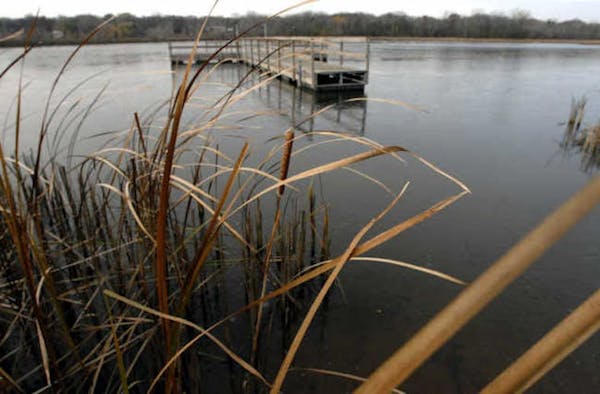From his backyard in Edina, Ralph Zickert has been watching all summer as curly-leaf pondweed grew in dark patches across Lake Cornelia.
Zickert and many of his neighbors on the lake have been frustrated with the slow progress in cleaning up the lake, especially after city officials this year decided against killing the invasive pondweed as it has done since an infestation several years ago choked the lake.
"It was a mass of green. It was a mat," Zickert recalled. "You couldn't boat across."
Zickert said he and other lakefront residents worry the pondweed will get that bad again. They're especially concerned that the weed's decomposition will release nutrients that will lead to an algal bloom.
Pondweed — which has leaves like lasagna noodles — along with sometimes-toxic blue-green algae and a stubborn population of nonnative goldfish, are the visible problems that have contributed to Lake Cornelia's listing as an impaired water by the Minnesota Pollution Control Agency. The Nine Mile Creek Watershed District and the city have been working since 2017 on ways to clean up Lake Cornelia, including a new $1.5 million storm water filtration system, but it's hard and inexact work.
Curly-leaf pondweed is a tricky plant, said Jessica VanDerWerff Wilson, Edina's water resources manager. The invasive weed has a tendency to choke out the native plants that fish and other lake animals need. But the Minnesota Department of Natural Resources has said it's unlikely the state will ever totally get rid of it.
"We agree that curly-leaf pondweed needs to be controlled," Wilson said, but she added that overly aggressive efforts at eradication would hurt native plants. She said residents are looking for guidance on further clean-water goals to the City Council, which is set to start talking about the issues at a meeting Tuesday.
Watershed District Administrator Randy Anhorn said any effort to repair a lake that has taken decades of abuse is going to be slow.
"It's going to take a while for it to bounce back," he said.
According to the U.S. Geological Survey, curly-leaf pondweed was first spotted in Minnesota in 1901, but it's come to widespread public attention only within the past 30 years. Locations across the state have reported significant pondweed infestations in the past few years, with increasing use of aquatic herbicide services to manage it.
Pondweed germinates in the winter, Wilson said. There's a narrow window of time in the early spring in which herbicide can be used to kill it, just after ice-out and before native plants start growing.
A mid-May survey found little pondweed, Wilson said, so Edina opted not to use herbicide on the lake this year. Unfortunately, a late June survey by the Nine Mile Creek Watershed District found pondweed flourishing.
Wilson and Anhorn both guessed that last winter's snow and a cloudy spring meant there was little sunlight available for the pondweed early in the season. There was not enough pondweed to justify treatment with herbicide in May, Wilson said.
But weeks later, the weeds had taken off. A watershed district survey of the lake found Lake Cornelia replete with pondweed by late June.
At this point in the summer, pondweed is dying and its decomposition is releasing phosphorus — priming the lake for a blue-green algae bloom, which has prompted watershed district officials to warn people away from Lake Cornelia nearly every summer for the past several years.
Anhorn said that while pondweed is an issue, the runoff from pavement and yards is still the biggest problem for Cornelia. Water flows across Southdale parking lots, Crosstown Hwy. 62, busy 66th Street and dozens of local roads into the lake. The decades of runoff have taken their toll.
"That wetland, which is now a lake, has taken 60 years of abuse, runoff, sediment and everything going into the lake," he said.
Remade Stillwater riverfront could bring new parks, boat launch, picnic space and fishing piers
Minnesotan's path from ISIS front lines to asset in war on extremism will be on display at sentencing

In Grand Rapids, Itasca Pride plans first event, but faces pushback
One person shot at YMCA in Coon Rapids

